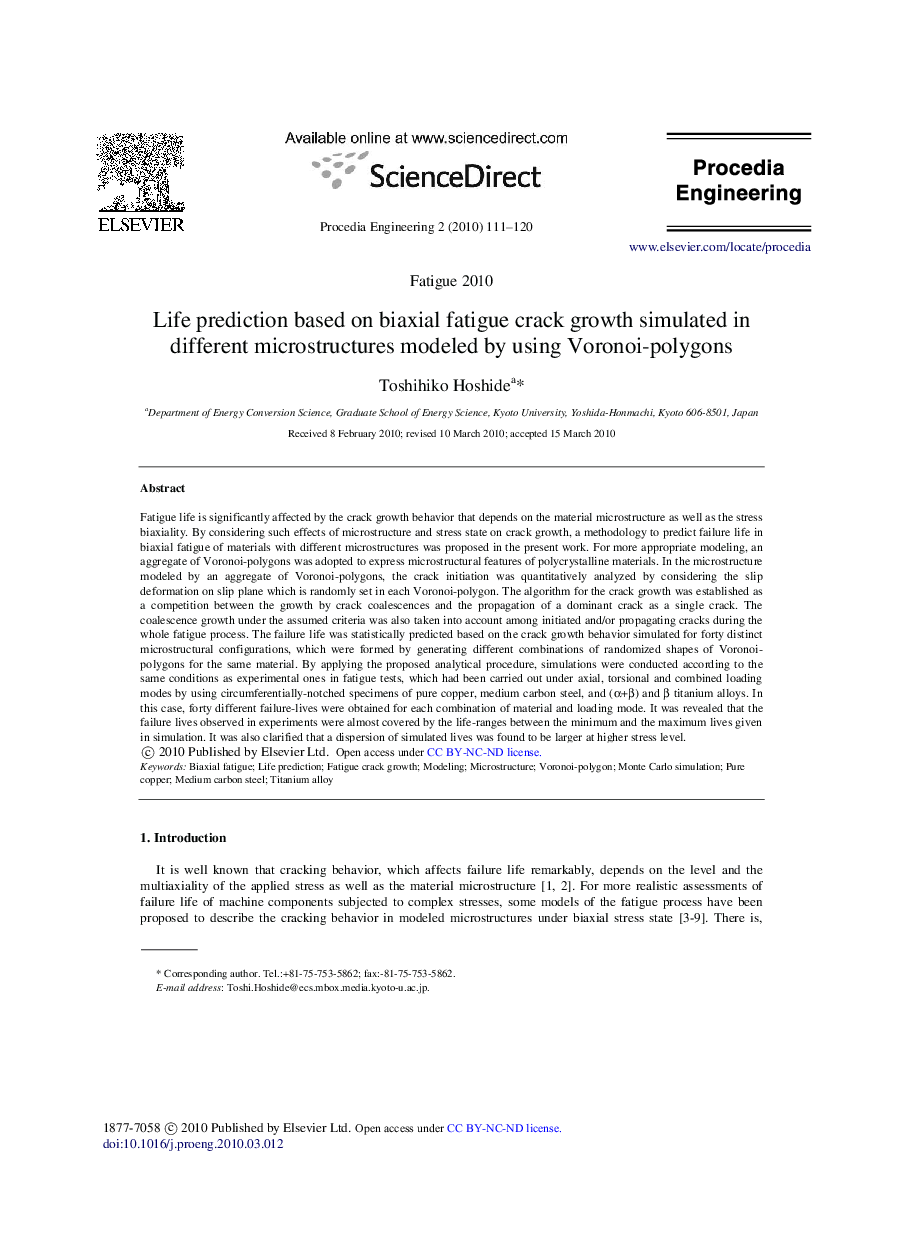| Article ID | Journal | Published Year | Pages | File Type |
|---|---|---|---|---|
| 864599 | Procedia Engineering | 2010 | 10 Pages |
Fatigue life is significantly affected by the crack growth behavior that depends on the material microstructure as well as the stress biaxiality. By considering such effects of microstructure and stress state on crack growth, a methodology to predict failure life in biaxial fatigue of materials with different microstructures was proposed in the present work. For more appropriate modeling, an aggregate of Voronoi-polygons was adopted to express microstructural features of polycrystalline materials. In the microstructure modeled by an aggregate of Voronoi-polygons, the crack initiation was quantitatively analyzed by considering the slip deformation on slip plane which is randomly set in each Voronoi-polygon. The algorithm for the crack growth was established as a competition between the growth by crack coalescences and the propagation of a dominant crack as a single crack. The coalescence growth under the assumed criteria was also taken into account among initiated and/or propagating cracks during the whole fatigue process. The failure life was statistically predicted based on the crack growth behavior simulated for forty distinct microstructural configurations, which were formed by generating different combinations of randomized shapes of Voronoipolygons for the same material. By applying the proposed analytical procedure, simulations were conducted according to the same conditions as experimental ones in fatigue tests, which had been carried out under axial, torsional and combined loading modes by using circumferentially-notched specimens of pure copper, medium carbon steel, and (α+β) and β titanium alloys. In this case, forty different failure-lives were obtained for each combination of material and loading mode. It was revealed that the failure lives observed in experiments were almost covered by the life-ranges between the minimum and the maximum lives given in simulation. It was also clarified that a dispersion of simulated lives was found to be larger at higher stress level.
